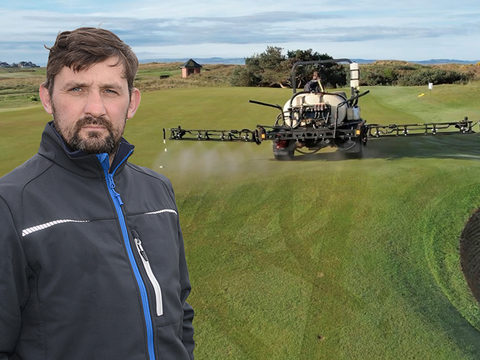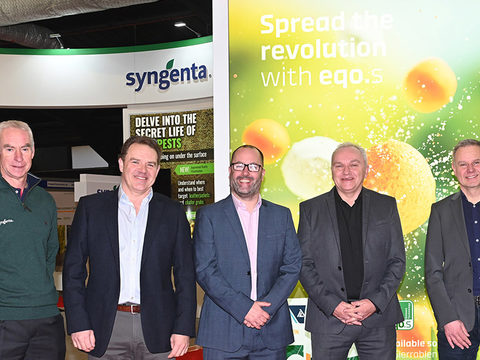Greenkeepers actions to tackle Dollar spot

Andrew Howarth, Estate Manager at Gog Magog Golf Club in Cambridgeshire, reports finding Dollar spot is becoming more of an issue every year, with increased areas of the courses becoming affected.
“We first saw it on green surrounds, primarily on ‘non-play sides’ with least traffic, but over recent years this has progressed onto more ‘in-play’ areas, including tees and greens.
“It is more widespread across the courses and no longer confined to one particular soil type or grass species. It’s now extending beyond the most prevalent sand-based parts of the courses with high fescue content.”
Andrew attributes changes in climate as the overriding reason for the increasing incidence of the disease.
He regularly uses the Smith-Kerns model to monitor humidity and attempt to predict the rise in disease pressure. When these periods are identified, he carries out a number of ITM practices that include more turf rolling, increased dew removal to avoid leaf moisture, timed nutrient applications and other bio stimulants for plant health, along with fungicide applications in worst case scenarios.

“For over seeding we are now selecting cultivars that are more resistant to the disease, with the aim to produce a more tolerant sward composition,” he added.
Andrew Howarth’s ITM actions to counter Dollar spot include:
- Increased turf rolling
- Dew removal
- Nutrient applications
- Biostimulants for turf health
- Fungicide applications
With the Smith-Kerns model he highlights that it is a case of getting into the habit of using this information. “I think the key to using it is learning at which point the trigger is for your site, and using the historical data of weather events to understand when the pressure will increase and what to expect when it does.
“We are at a point now where from mid-May to mid-September the model will be factored into all of our turf management decisions for greens surfaces.”
Andrew acknowledges there is still so much unknown about Dollar spot in the UK.
“We have had some success in suppressing it through different practices, without really fully understanding why?”
He believes it will be valuable for further research on both chemical and cultural Dollar spot controls, with data to back up any results so a clear strategy of management can be identified and implemented by turf managers - as with other turf pests and diseases.
“I am hoping that being involved with the Syngenta trials will give us a further understanding of the disease and climatic triggers through the Smith-Kerns model and ultimately what chemical control is possible.”












